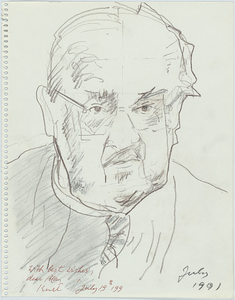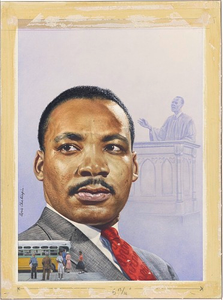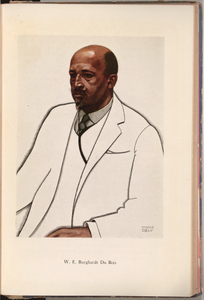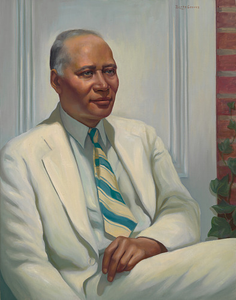Description
Born Baltimore, MarylandAs chief staff lawyer for the National Association for the Advancement of Colored People (NAACP) from 1938 to 1961, Thurgood Marshall led the legal campaign to dismantle the nation’s longstanding barriers to racial equality. His crowning achievement in this effort came in 1954, when he tailored the arguments leading to the Supreme Court’s unanimous decision in Brown v. Board of Education, which found racial segregation in public schools to be unconstitutional. Following this landmark victory, Marshall’s legal stature continued to grow and, in 1967, he became the Supreme Court’s first African American justice.On May 31, 1955, the Supreme Court issued a follow-up ruling to Brown v. Board of Education that instructed the states to implement school desegregation plans “with all deliberate speed.” The publication of this portrait of Thurgood Marshall on the Time magazine cover of September 19, 1955, coincided with the start of the first school year to come after that ruling.Nacido en Baltimore, MarylandComo abogado principal de la Asociación Nacional para el Progreso de las Personas de Color (NAACP) de 1938 a 1961, Thurgood Marshall lideró la campaña legal para eliminar los arraigados obstáculos a la igualdad racial. Su logro más importante se dio en 1954, cuando formuló los argumentos que llevaron a la decisión unánime del Tribunal Supremo en Brown vs. Consejo de Educación, que declaró inconstitucional la segregación racial en las escuelas públicas. El prestigio legal de Marshall siguió en aumento tras esta histórica victoria, y en 1967 se convirtió en el primer juez...
Image
Oil On Board
National Portrait Gallery, Smithsonian Institution; gift of Time magazine
Record Contributed By
National Portrait GalleryRecord Harvested From
Smithsonian InstitutionKeywords
- Activist
- Activists
- Chapin, James Ormsbee
- Civil Rights
- Civil Rights Activist
- Costume
- Dress Accessories
- Dress Accessory
- Facial Hair
- Judge
- Judges
- Justice
- Law And Law Enforcement
- Lawyer
- Lawyers
- Male
- Marshall, Thurgood
- Men
- Mustache
- Mustaches
- Necktie
- Neckties
- Personal Attribute
- Portrait
- Portraits
- Presidential Medal Of Freedom
- Reformer
- Reformers
- Society And Social Change
- Thurgood Marshall
- Tie
- Us Supreme Court Justice




![Lawyers Before Supreme Court (Hayes, Marshall Nabrit) [3963] Lawyers Before Supreme Court (Hayes, Marshall Nabrit) [3963]](https://d2l9jrtx1kk04i.cloudfront.net/8646f95fa73cc2d31ff76b3464f16ded959245ba.png)
















